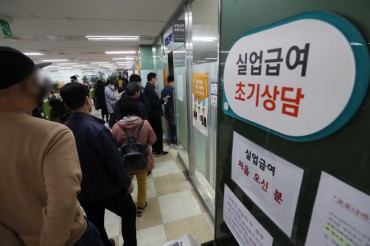
South Koreans swapped rice out for noodles once every five days in 2016, per a government study on last year’s noodle consumption. (Image: Yonhap)
SEOUL, Dec. 29 (Korea Bizwire) – South Koreans swapped rice out for noodles once every five days in 2016, per a government study on last year’s noodle consumption.
The “noodle” term used in the study does not include “ramyeon” – packaged instant noodles for which the market is so big it is regarded as its own separate category – but refers to other products such as naengmyeon (buckwheat noodles served cold), pasta, guksu (traditional Korean noodles), and others.
The foods ministry and state-operated corporation’s market research report on the status of the non-ramyeon noodle market found that individual yearly consumption (domestic sales and imports) amounted to 7.7 kg.
Using this figure and estimating a single serving/bowl consists of 110 g of noodles, one person would have eaten 69.9 bowls last year, about one every five days.
With an average yearly growth rate of 3.1 percent, total noodle production is increasing steadily; last year’s 709.1 billion won in volume is 13.1 percent higher than 2012, and 10.2 percent higher than 2015.
The foods ministry attributes the yearly spike in production to increased demand in the form of more noodle shops and new home meal replacements.
Among the noodle categories, guksu takes up a large proportion, consisting of 69 percent of last year’s production.

Once considered a dining out option, naengmyeon sold as a home meal replacement has contributed to a boost in production. (Image: Yonhap)
With the exception of pasta, the market for each subcategory of noodle has expanded in the last five years, with naengmyeon leading the charge.
Once considered a dining out option, naengmyeon sold as a home meal replacement has contributed to a boost in production.
The market for pasta, meanwhile, shrank by 35.2 percent, as consumers took advantage of the diversity of noodle options.
Exports have risen consistently by an average 7.7 percent per year going back a decade; last year’s export volume of $880.7 million was 95.7 percent greater than the $450 million recorded in 2007.
The industry registered a trade deficit in 2016, with an import volume of $921.7 million. China was the source of 80.3 percent of all imports.
Major export countries were the United States (31.1 percent), China (11.2 percent), Japan (7.8 percent) and Canada (6.7 percent).
Exports to China in the past five years have risen by a yearly average of 6.3 percent.
Glass noodles (Chinese vermicelli) consisted of 97.2 percent of all import volume.
Lina Jang (linajang@koreabizwire.com)






